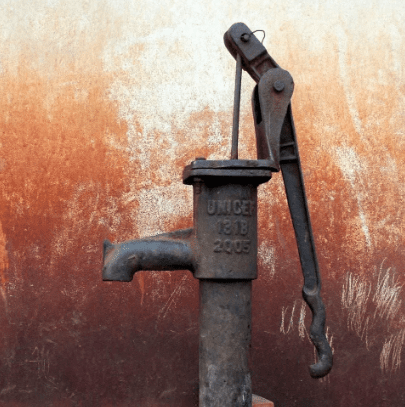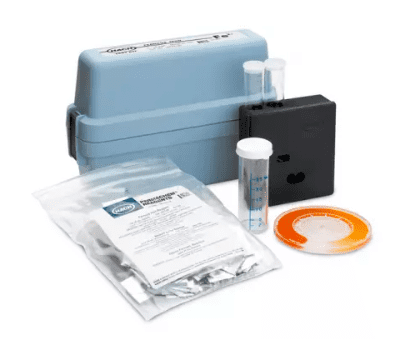The straight truth about iron in well water
It is impossible to imagine our lives without water. Water is a necessary element for daily life, whether it’s cooking, showering, washing, or even drinking. Therefore, it’s a problem when water contains unsafe impurities such as high amounts of iron. Iron in well water is a substantial problem in many areas of Manitoba. Though iron is essential for our health and well-being, it may pose a threat to us in water. You might be asking yourself how the mineral gets into well water. Let us give you the answer:

How does iron get into our well water?
Experts explain that there are two main ways that iron gets into well water:
Through the surface and rainwater: When it rains, the flowing water gathers iron from the soil found on the surface carrying it into the well, where it dissolves in the water. This is plainly shown through the color change of well water after the rain. It’s because soil and dirt contain traces of iron.
Soil corrosion and erosion: When water from surrounding regions flows into your well, it contains traces of iron. This is because the water flows through the earth picking up dust particles, soil, and rust that travel along with the water finally ending up in your well. These are the two main reasons why you find traces of iron in your supply of water.
Traces of iron that are above 0.3 parts per million will start to stain what it comes in contact with, and also leave a metallic, sometimes bitter taste in your mouth.

Why can Iron in Your Water be Hazardous to Your health?
If the water contains toxic amounts of iron, then it can be unsafe for our health. If most of your daily water use comes from well water, then your health is in danger. First, contaminated water enables the spread of water-borne diseases. Toxic amounts of iron may attract iron bacteria. These are microscopic organisms that feed off iron leaving behind iron waste. This is the gross slime that you find sticking to pipes and provides a breeding ground for other harmful organisms and bacteria. The EPA lists iron as a Secondary Drinking Water Contaminant due to the pathogenic organisms that feed off the iron and intensify the risk of infection or disease if consumed by humans.
Second, large amounts of iron in the body are very toxic, and many health experts caution on checking the purity of your water before consuming it to avoid acute health risks.
Third, excessive amounts of iron in water are also hazardous to your hair. Well, water also contains high amounts of minerals besides iron and if absorbed by hair, they may cause dryness, darker discoloration, brittleness, and an unpleasant metallic odor. If you have light-colored hair, the iron may tint orange, and for those with dark hair, it will turn darker, and it may also cause red highlights. Moreover, oxidized iron works the same as mild peroxide when it reaches the hair. This may lead to a visible change in your hair texture and an uncomfortable excessively dry feeling.
Fourth, toxic amounts of iron also damage your skin. The damaged skin cells then cause wrinkles. Additionally, iron is part of a group of minerals that react with soap to cause excessive scum residue, which clogs your pores and leaves you with skin problems like eczema or acne.

How Does Iron in Water Damage Your Home?
The iron in well water may not be enough to cause any significant effect on your health, but you will feel it in your food, clothes, dishes, and appliances.
Slime and stains: Iron in well water will leave a rusty brown stain in your sinks, dishes, laundry, and appliances, and sometimes, the stains are difficult to remove or clean, making your appliance look unattractive, unsanitary, and gross.
Clogged Pipes: In most cases, iron fragments and rust particles travel through the water supply and stagnate for extended periods. When they stagnate, the iron accumulates in the pipes leading to expensive repair of water-related appliances.
Foul smell and taste: Iron water not only leaves residue on your dishes and kitchen equipment, which has a repulsive look, but it also leaves a disgusting odor and metallic taste on the dishes and the food cooked in that water.
How Do I Get My Water Tested for Iron?
There are several devices you can use to test for iron in well water. You can have a lab test done or Affordable Water Treatments will do an in-house test for you, which will give you easy, quick, and precise results. Once you acquire the testing, the next step is to find out the acceptable iron levels in the well water. In Canada a contaminant level is 0.3mg/L is considered acceptable. Levels higher than .3ppm of iron raise the probability of having damaging side effects on food, clothing, dishes, and appliances.

